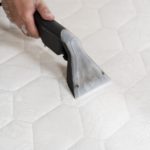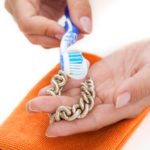Wheelie bins, just like any other bin in your home, start to smell foul if they’re not cleaned regularly and properly!
In fact, the bin can smell so awful you won’t want to go near it to wash it out. Yucky!
But sadly, you have to wash it at some point.
So, let’s find out how you clean a wheelie bin, so you can maintain it on a regular basis and keep the pests and aromas at bay.
Do Wheelie Bins Need Cleaning?
Absolutely! Wheelie bins are just like any other bin, they’re just a lot bigger and are usually kept outside, but they still need to be cleaned.
You need to empty, clean and treat your wheelie bin with disinfectant on a regular basis so you keep bacteria, odours and pests away.
If you don’t clean your wheelie bin, it will start to smell vile very quickly. All manner of bacteria will thrive in it, and pests (maggots) will set up home in the bin.
You might even have a problem with foxes and other small animals trying to hack into your wheelie bin.
Of course, you can deal with infestations, smells and germs at home. But it’s often better to stop an infestation, poor odours and bacteria from thriving and becoming major issues in your bin in the first place.
In short, you’ve got to clean your wheelie bin. Find out how you do this below.
How Do You Clean and Disinfect a Wheelie Bin?
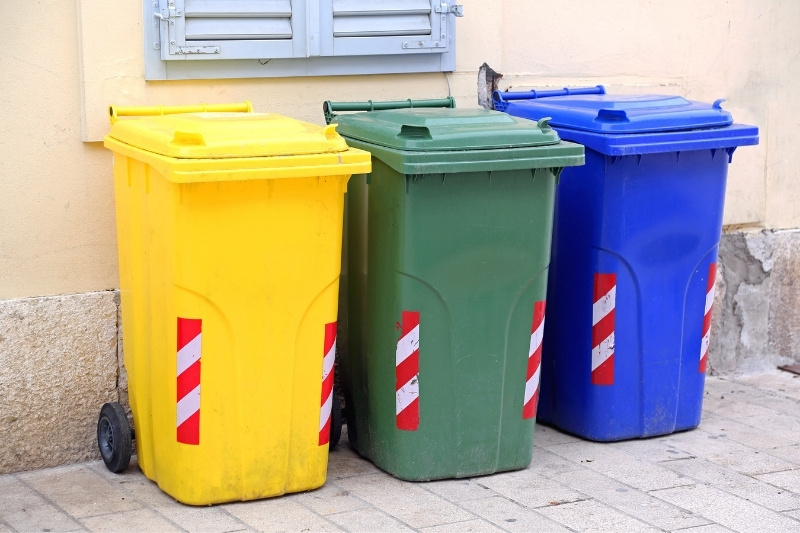
The easiest and safest way to clean a wheelie bin is outlined below.
Generally, washing up liquid and water is all you really need to wash a wheelie bin out. These items are relatively safe to use around pets and kids too, which is an added bonus.
What you need:
- A working space
- Gloves
- Tough bristled brush
- Cold and warm water
- Dustpan and brush
- Bucket
- White vinegar
- Washing up liquid
- Cup
- Spoon
- Soft-headed mop
- Small brush
- Cloth
- Disinfectant spray
- Optional: Hosepipe or pressure washer
Steps to follow:
- Consider where you’ll be doing the cleaning. You need access to a drain and water, so you don’t want to be washing the bin too far away from your home.
- Pop some gloves on.
- Remove all the bin bags/waste from the wheelie bin.
- Pop the wheelie bin on its side, so you can clean it better.
- Get a toughed bristled brush and start rubbing down the sides of the wheelie bin.
- Step 5 may take some time, if the wheelie bin has a lot of stuck on grime.
- Scoop up and clumps of dirt into a dustpan, and then bag and bin this rubbish.
- Stand the wheelie bin upright.
- You’ll need to fill the bin up with water to dislodge any leftover dirt that’s gotten stuck on the walls of the bin. You can use a garden hose to soak the interior of the bin (or fill up buckets of water and pour these inside the bin).
- If you’ve got a pool of old, dried juice at the bottom of the bin, use some hot water to dislodge this grime.
- Use the bristled brush once again to rub water all over the interior walls of the bin.
- Empty the dirty water from the wheelie bin. The bin should be free from large clumps of dirt at this point.
- Fill a bucket up three-quarters of the way with warm water, and mix a cup of washing up liquid with half a cup of white vinegar into it.
- Stir the mixture.
- Pour the contents of the bucket into the wheelie bin.
- Grab a soft-headed mop, dip it into the water in the bin and start rubbing the walls of the wheelie bin down. It may be worth asking a second person for help when doing this because one of you can mop, while the other can tilt the bin ever so slightly.
- Repeat step 16 until you’ve thoroughly cleaned the wheelie bin.
- You will also need to clean the lid and around the hinges too (use a smaller brush to do this).
- If need be, empty the dirty water and add fresh soapy water to the bin.
- When you’re finished, empty all the water out of the bin.
- Rinse the bin with fresh, cold water (you need to pop the bin on its side again and flush it out).
- Close the lid on the bin and start cleaning the exterior of the wheelie bin.
- Just fill a bucket up with warm water and washing up liquid.
- Dip a cloth into the water and start scrubbing the wheelie bin clean.
- Rinse the outside down with cold water when you’re finished.
- Disinfect the entire wheelie bin (inside and out) with a multipurpose disinfectant (spray and wipe all of the sides down).
- You need to dry the bin before you use it again, so open the lid, tip the bin upside down, and balance one side of the bin on a curb. The wheelie bin should be upside down and on an angle. This allows water to run out of the bin.
- Make sure the bin is not sitting upside down and flush on the floor. It won’t dry effectively this way.
- Once the bin is dry, turn it the right way up and start using it again.
Tip: If you’ve got access to a pressure washer, you can use this to blast dirt off the walls of the wheelie bin.
Of course, you will also have to clean the bin with soap and water afterwards, but this may speed up the cleaning process initially.
If you fancy using something stronger to clean your wheelie bin, swap the washing up liquid for bleach. But remember to dilute the bleach in water before you use it.
Also, keep in mind that bleach has a tendency of discolouring surfaces, so your wheelie bin may lose its colour.
Keeping a Wheelie Bin Clean

Here are a handful of ideas to help you keep your bin clean:
- Clean it often.
- Recycle whenever possible.
- Put food in the food waste bin and not in the wheelie bin.
- Try and keep your wheelie bin in a cold area.
- Tie bin bags tight, so nothing can enter them.
- Clean packets and tins before putting them in the bin.
- Make sure you close the lid on the wheelie bin.
- Pop some bicarbonate of soda on the base of the bin to absorb and neutralise stinky smells.
- Disinfect the bin every day, particularly the handle where you open the bin up.
How Often Should You Clean a Wheelie Bin?
The rubbish lorry usually comes to collect rubbish every fortnight in the UK, so ideally you should give your wheelie bin a clean out every time the bin gets emptied. That way it’s clean and ready for you to start putting new rubbish into it.
Ideally, if you keep on top of your wheelie bin cleaning, this type of fortnightly clean shouldn’t take you very long to complete.
Plus, cleaning the wheelie bin frequently will also prevent big build ups from occurring and should keep pests away.
You can also disinfect the lid and handle area every day/every time you open the bin to keep it free from bacteria, and to make sure it’s as hygienic as possible.
In short, don’t allow your wheelie bin to get into an awful sticky state, keep on top of the washing.
What Causes Maggots in Wheelie Bins?
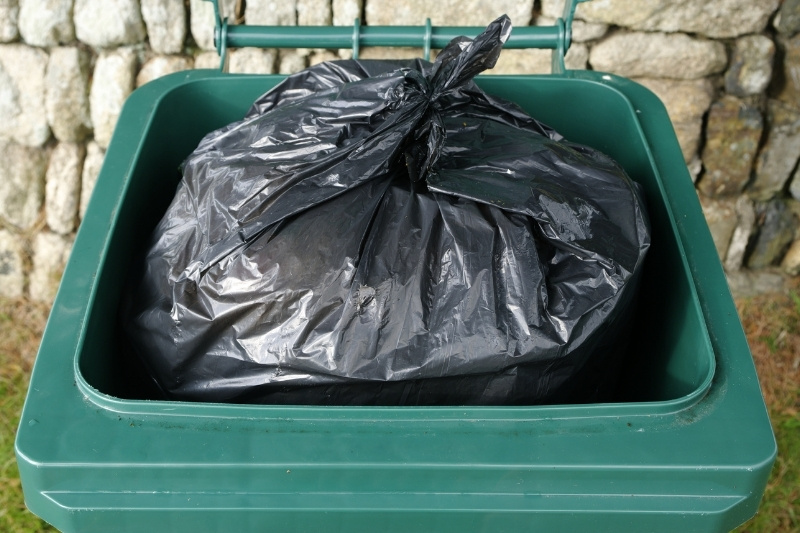
Maggots are the larvae of flies, and the flies in question like to lay their eggs in dark environments where there is a good supply of decaying food to munch on, hence they choose to live in bins.
And just like any other bin you have at home, if you don’t empty, clean and disinfect your wheelie bin on a regular basis you will create the perfect moist environment for maggots to thrive in.
The significant differences between having maggots in a regular size bin and a wheelie bin are, a wheelie bin is much bigger than a kitchen bin, so you can fit more rubbish into it. And a wheelie bin is usually kept outdoors and in direct sunlight.
So, the environment is much bigger, is toasty, and is full of rotting, nutrient rich food for maggots to dine on.
It’s worth noting that maggots multiply extremely quickly, so if you don’t keep an eye on your wheelie bin, you could very quickly become overrun with a maggot infestation.
And while it is possible to treat and eradicate maggots in a bin, if the problem gets out of hand you may have to call a professional in to help you clean out the infestation.
Why Do Wheelie Bins Smell?
Wheelie bins smell because old, dirty rubbish, and in some cases, leftover food is stored in them.
In addition to this, wheelie bins are a lot bigger than say a kitchen bin, so you probably fill the bin up with a lot more dirt from your house.
Plus, the wheelie bin is probably kept outside, where there is direct sunlight to heat the bin and its contents up, thus making it even more pungent.
Food also starts to rot quicker when it’s left in a hot climate, so juicy food residue will start pooling at the bottom of the bin. Yucky!
If you don’t remove all of the waste bags and rotting food, the bin will start to stink. And while you won’t find this aroma pleasant, there are plenty of creatures and insects that will!
You’ve got to make emptying and cleaning out your wheelie bin part of your regular cleaning routine, otherwise bacteria, pests and odours will start to thrive.
It’s really not very pleasant for you, and it can be a pain for your neighbours too because animals will come over to your bin to see what’s going on.
So, wash your bin frequently, disinfect it, and line the bottom of the bin with newspaper that’s been sprinkled with essential oil to stop poor odours from permeating through the air.
Hiring a Professional Wheelie Bin Cleaner?
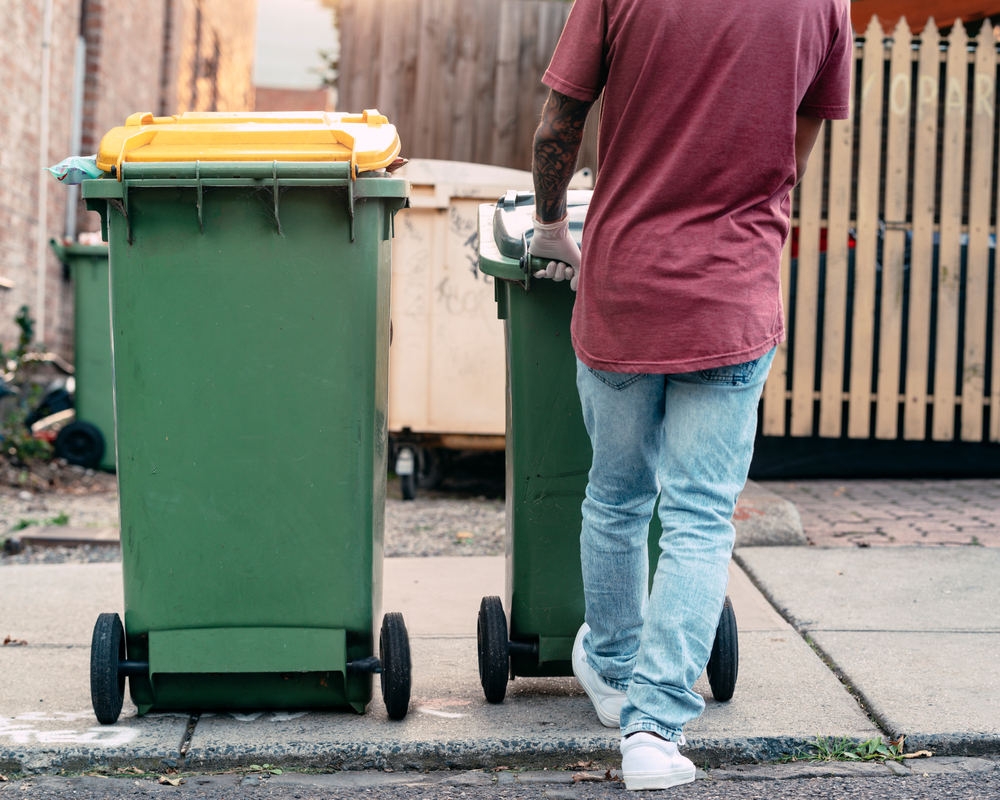
There are a number of wheelie bin cleaners up and down the UK who specialise in cleaning and deodorising wheelie bins, and you could use this service to maintain your bin.
You can find your local service by doing a quick online search. Just put ‘wheelie bin cleaner near me’ into the search bar and several cleaners will pop up.
Services typically include, a fortnightly subscription to a wheelie bin clean, a thorough clean, deodorising the bin, and in some cases, they add a natural insecticide to the bin to keep pests away.
There are, of course, different services on offer with each company, so do your research before you choose a professional.
It’s difficult to say how much this service costs exactly because it depends on your location, what cleaning package you go for, and if you want any other bins cleaned at the same time.
The fee is usually calculated on a ‘per wheelie bin’ basis as a guide.
Before you pick a company, read about them online, check out the reviews and find out how much they charge. It might be worth booking an online consultation with the professional before they come to clean your wheelie bin, so you can iron out any concerns you have.
Some questions you could ask include, but are not limited to:
- Do I need to supply the cleaning products?
- Where does the waste cleaning water go?
- Where do you clean the wheelie bin? (At home/take away/in the garden/on the street)
- As a company, do you need a permit to clean wheelie bins in the street?
- Do I need to be at home when the cleaning takes place?

Bethan has a passion for exploring, reading, cooking and gardening! When she’s not creating culinary delights for her family, she’s concocting potions to keep her house clean!


